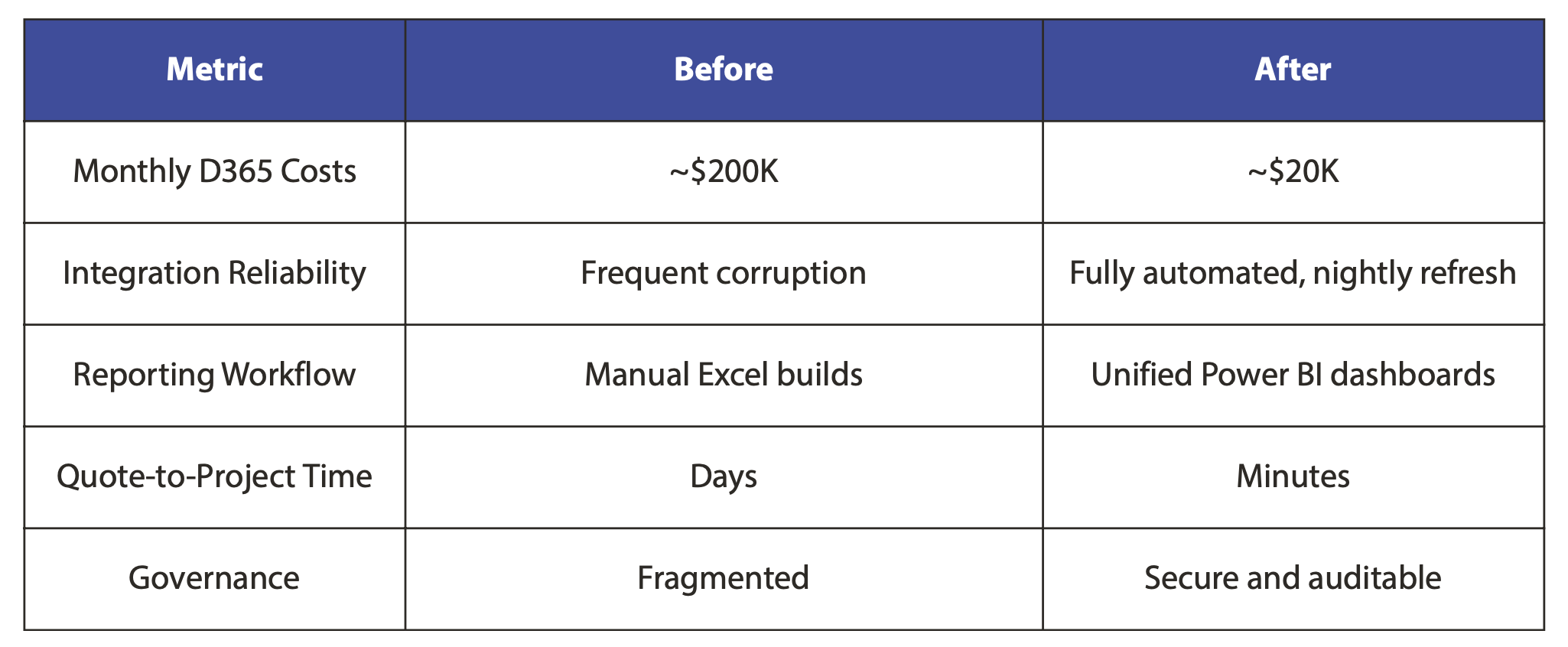SITUATION
A top 10 U.S.-based PR and Marketing Services provider came to Ryse Technologies shortly after a turbulent Microsoft Dynamics 365 Finance & Operations (D365 F&O) go-live. The firm, which relies heavily on accurate project accounting to drive its retainer and time-based billing model, was flying blind—unable to confirm if timesheets and expenses were correctly posted to projects, or if margins were being reliably captured. The rollout had been limited by budget constraints, resulting in an MVP (minimum viable product) deployment. Key financial features like cash-flow forecasting, expense approvals, and AP automation were either missing or misconfigured. Further complications arose from:
- A satellite UK office stuck on Xero due to payroll constraints
- A faulty Mavenlink integration that corrupted project data
- A sales team generating quotes in a dozen inconsistent formats
- Excel-driven consolidation, variance analysis, and forecasting that were growing less reliable each month
CHALLENGES
- Unreliable project accounting: Timesheets and expenses couldn’t be trusted to roll up into the correct projects
- Critical functions missing or misconfigured: Cash-flow, approvals, and automation features were absent or broken
- Fragmented systems: UK finance still ran on Xero; Mavenlink’s faulty connector corrupted every data import
- Disjointed sales operations: Quotes lacked standardization, leading to inefficiencies and rework
- Manual reporting overload: Financial reports were built in massive Excel files, vulnerable to error and inefficiency
OUR APPROACH
Ryse began with a comprehensive post-implementation assessment, mapping current-state challenges and cataloging improvement opportunities within Azure DevOps. Each opportunity was ranked by business impact and implementation effort—giving leadership a roadmap to prioritize limited resources for maximum return.
Phase One: Stabilization & Clean Data Flows
- Replaced Mavenlink integration: After Mavenlink failed to resolve connector issues, Ryse built a custom integration that pulled clean time and expense data into D365 nightly
- Unified the data layer: Created an Azure Lakehouse using Databricks to merge data from D365, Xero, Mavenlink, and HubSpot—establishing a single, trusted semantic model for reporting
Phase 2: Reporting & Automation
- Modernized financial reporting: Finance now uses Power BI dashboards for cash-flow projections, income statements, utilization metrics, and balance sheets—all fed by live data
- Standardized quoting: Built a Power Platform quoting tool for Sales to generate consistent proposals that automatically push project details into D365
- Activated Microsoft AI forecasting: to enable predictive cash-flow management
Phase 3: Optimization & Cost Reduction
- Reengineered license structure: Consolidated D365 licenses, reducing monthly costs from ~$200K to ~$20K
- Imposed security & control measures: Introduced separation of duties, audit logging, AP capture, and expense approval workflows
- Redesigned project hierarchy: Realigned financial and delivery structures to ensure project profitability rolled up correctly
RESULTS

IMPACT
What started as a rescue engagement evolved into a trusted, long-term managed services partnership. With each D365 release, Ryse conducts quarterly reviews to test new features, measure their impact, and continuously evolve the client’s roadmap. The result: a modern, secure, and integrated financial environment that scales with the business.
WHY IT MATTERS
Post-go-live chaos is not uncommon—but staying in that state is a choice. Ryse Technologies specializes in turning partial deployments into full strategic wins by stabilizing systems, enabling cross-platform reporting, and creating operational frameworks that evolve with business needs.







